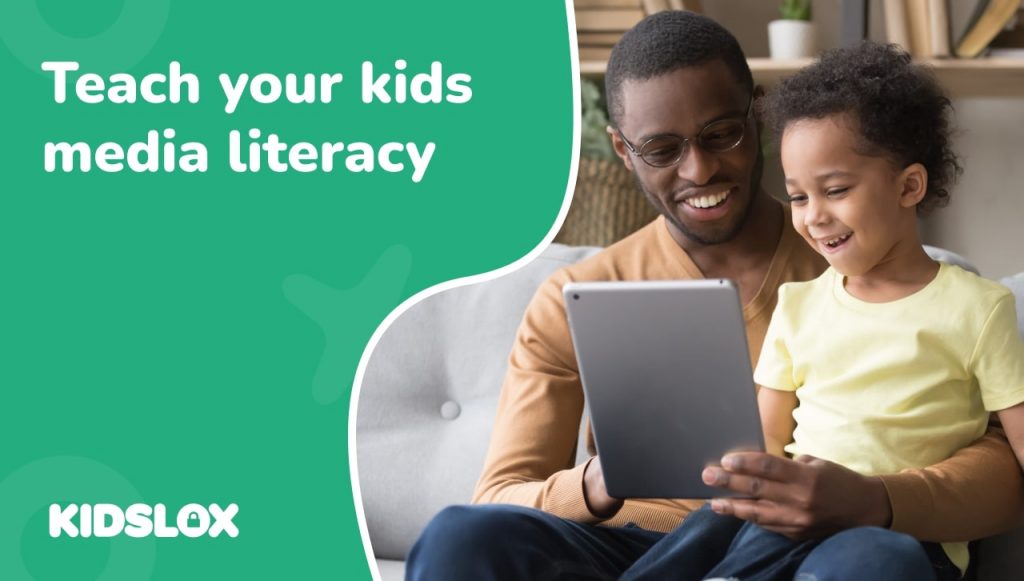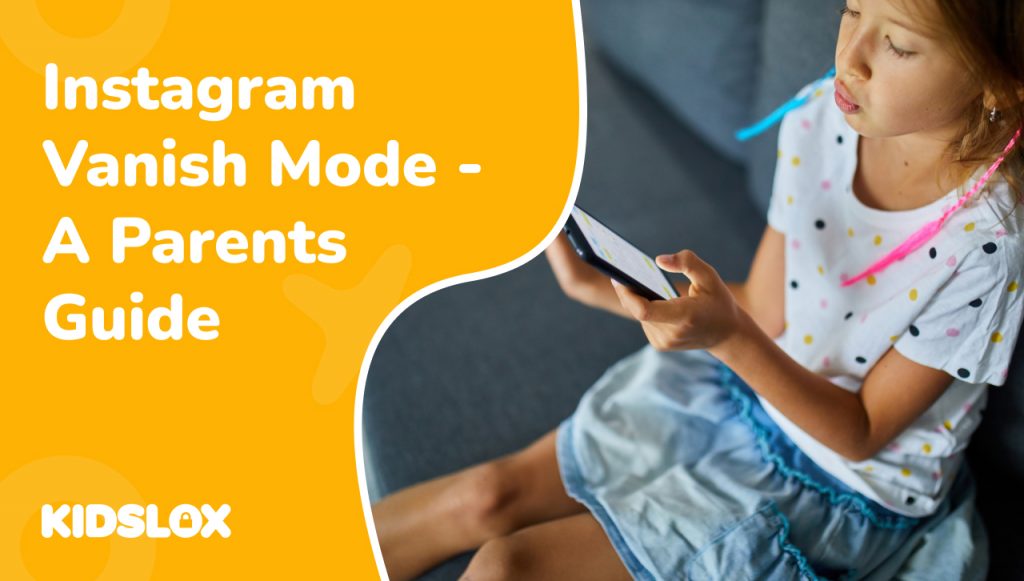In the digital age, media literacy is becoming increasingly important for children and teenagers.
With a steady stream of information coming from various sources such as television, movies, and the internet, kids and teenagers must understand how to interpret and analyze what they are exposed to. And with more than half (53%) of teens using personal smartphones – and nearly two-thirds (65%) using social media multiple times per day – it’s never been more important to guide them through media literacy.
Parents can play an essential role in helping their kids become more aware of the messages they receive through different media sources and resources. By teaching them critical thinking skills about media consumption and other strategies for understanding the power of media, parents can help equip their children with valuable tools for living in today’s world.
To help empower you as a parent, we’ve put together this guide on media literacy for kids and teenagers. We’ll look at some definitions that can help you better understand the power of media, as well as tips and tools for teaching your children critical thinking skills concerning media consumption.
What is Media Literacy, and Why Is It Important?
Media literacy is the ability to access, analyze, evaluate, and create media in various forms. It encompasses the skills of deciphering, interpreting, understanding, and creating different types of media content.
With the advancement of technology and the increased prevalence of digital media, it’s more important than ever for children and teenagers to become media literate.
By being aware of the power of media, young people can become more informed consumers and understand how to question and challenge the messages they are exposed to on a daily basis. This helps them make more informed decisions when interacting with different media types, whether TV shows, movies, or social media platforms.
But why is understanding and growing media literacy critical?
Media Literacy Grows Your Awareness Of Subtle Messaging
Media literacy helps increase awareness of the messages we are exposed to daily, allowing us to become more informed consumers and make better decisions when interacting with different media types.
Statistics show that children interact with media an average of 7 hours a day, so it’s crucial that they are able to decipher and interpret the messages they are receiving. If they are unaware of how media manipulates or influences their behavior, they can become more vulnerable to certain messages and be easily swayed by them.
Media Literacy Reveals Media Representation
By understanding the power of media, young people can become more critical of how different kinds of people are represented in different types of media content. They can learn to question and challenge stereotypes, recognizing that not all media messages are accurate or helpful.
Media Literacy Can Help Build Skills for Life
Learning to be media literate helps young people develop skills that will be valuable throughout their lives, such as critical thinking and problem-solving.
Media literacy – particularly in the digital age – is a skill that has become increasingly important for success in school, work, and life. For instance, media literacy can help teens better navigate digital spaces, recognizing online scams and disinformation.
Literacy Offers A Better Understanding Of The Power Of Media
Communications researcher Martin Weber once said, “the medium is the message.” In other words, the methods by which media is delivered and experienced can shape our understanding of it just as much as the content itself.
News media, television, film, social media – all of these can shape our understanding of the world, and it’s essential to understand both how and why.
Media Literacy Encourages Respect For Different Perspectives And Beliefs
Not all people experience and evaluate media in the same way. Understanding that different people can interpret and respond differently to media messages is important.
Media literacy gives young people an opportunity to think critically about these differences and develop respect for other perspectives and beliefs. If our children are to grow up in a diverse, global society, it’s essential for them to understand that not everyone will interpret media messages in the same manner.
Encouraging Critical Thinking Skills About Media Consumption
As parents, there are several steps we can take to help our children become more aware of the power of media and develop critical thinking skills when it comes to media consumption. Here are some of the best ways to incorporate media literacy into a young person’s life:
Tip 1. Be a Model
You are the best role model for your children when it comes to media consumption.
Make sure you are mindful of what types of media and messages you consume and encourage healthy media habits in yourself and your children. This goes beyond simply how you use technology or media and includes how you discuss it and engage with media on a daily basis.
Tip 2. Set Limits
Limiting the amount of time young people spend on media can be beneficial for their health and well-being, as well as helping them prioritize activities that will help them grow in other areas of life, such as school, sports, or hobbies. Try to establish screen-time limits and set specific times of the day or week when young people are not allowed to use any screens.
3. Discuss Media Exposure With Your Kids
Parents should be sure to talk with their children about the media content they are exposed to, such as TV shows, movies, and other sources. Ask them questions about what they think or how they feel about different messages in the media and encourage critical thinking in what they consume.
For example, here are some prompts you can use to engage in discussion with your children:
- What kind of message does this show/movie/ad deliver?
- Do you think it accurately reflects reality?
- How might someone else interpret this message differently than you do?
By engaging with your children in open dialogue, you can help them become more aware of the power of media and the messages they are exposed to.
4. Incorporate Media Literacy Into Your Family’s Everyday Life
You can also make media literacy part of your everyday life by incorporating it into family activities and conversations. For example, watch a movie together and then discuss the messages it conveys. Read newspapers or magazines with your kids, looking for examples of bias or disinformation in the media.
By making media literacy part of your daily life, you can help your children become more aware of how media shapes their understanding of the world. It also shows them that they don’t have to fear different messages but should think critically about them.
5. Seek Out Educational Resources
Many educational resources can help parents and children alike become more media literate. For example, the library is an excellent source of books and other materials on media literacy. The internet also offers a variety of articles, videos, and other resources on the topic.
By becoming more informed, parents can help their children become more media literate and better understand the power of different media sources.
In conclusion, teaching children and teenagers to be media literate is becoming increasingly important in the digital age. Parents play an important role in helping kids develop critical thinking.
Media Literacy Activities For Parents
To help you bring media literacy into your family’s everyday lives, we’ve put together some activities to make the process more fun and engaging for you and your children.
The Great Media Scavenger Hunt
This activity encourages kids to look for specific types of messages in different sources of media, such as television, online videos, or print materials. You can provide a list of items they need to find (such as an example of biased language or a commercial featuring gender stereotypes) and then have them search for these items in the media.
Come back together and discuss what they found, why it’s problematic, and how we can better understand the messages in media. This will help them develop their critical thinking skills and become more aware of the power of media.
Create Your Own Media Messages
In this activity, you’ll work with your kids to create their own media messages. Ask them to come up with a message they want to communicate, and then help them create a commercial, video, or another kind of media to convey it.
Afterward, have them reflect on their message and see if they can identify any potential issues with it or areas for improvement. This will help them understand the importance of considering how viewers receive different messages. It will also help them flex their own creative skills as they seek to create more thoughtful media messages.
Analyze the News
For this activity, choose a news story or article and then read it together with your kids. Ask them to identify any potential bias or disinformation in the story and discuss why it’s important to be aware of these issues when consuming media.
Discuss the differences and look for examples of a particular news or pop culture story from different viewpoints. This will help your kids understand the importance of considering different perspectives when evaluating media sources and messages.
Connect Media Literacy to Other Subjects
Finally, consider how media literacy can be connected to other subjects your children learn in school.
For example, if they’re studying history, have them look for different versions of the same event in news or television coverage and then compare and contrast them. If they’re taking a science class, ask them to explore how scientific discoveries are portrayed in the media.
By making connections between media literacy and other areas of study, you can help your children better understand the importance of being a discerning consumer of information.
Building Media Literacy Starts with You
Media literacy skills are essential to help young people navigate the digital world. As parents, it’s our responsibility to ensure that children and teenagers understand how media works so they can make informed decisions about what types of content they consume.
Ultimately, building media literacy starts with us – lets all work towards creating a generation of empowered individuals who understand the power of media! With the next generation being increasingly tech-savvy and media literate, parents and guardians have a unique role in providing the necessary guidance and resources to help young people make more informed decisions about media consumption.
With these activities, you can give your children a better understanding of how media works, giving them a toolkit for becoming savvy information consumers in our digital world.
Parental control apps such as Kidslox can provide an additional layer of protection when it comes to helping children become media literate and safe online. These apps allow parents to set time limits for their child’s device use, monitor their activity, and block certain types of content based on age-appropriate settings.
With Kidslox, you can easily customize the settings to fit your child’s needs, giving you greater control over their media consumption. One Kidslox account controls all devices in your family – helping you take control of the media your children are exposed to.
Using tools like Kidslox, you can help create a safe and secure digital environment for your kids to learn about the power of media and develop their own critical thinking skills without worrying about exposure to inappropriate content. With parental control apps, you’ll have peace of mind knowing that your children are safe online and becoming more media literate every day.
Learn more about Kidslox online, and take the next step in helping your kids become media literate today.





